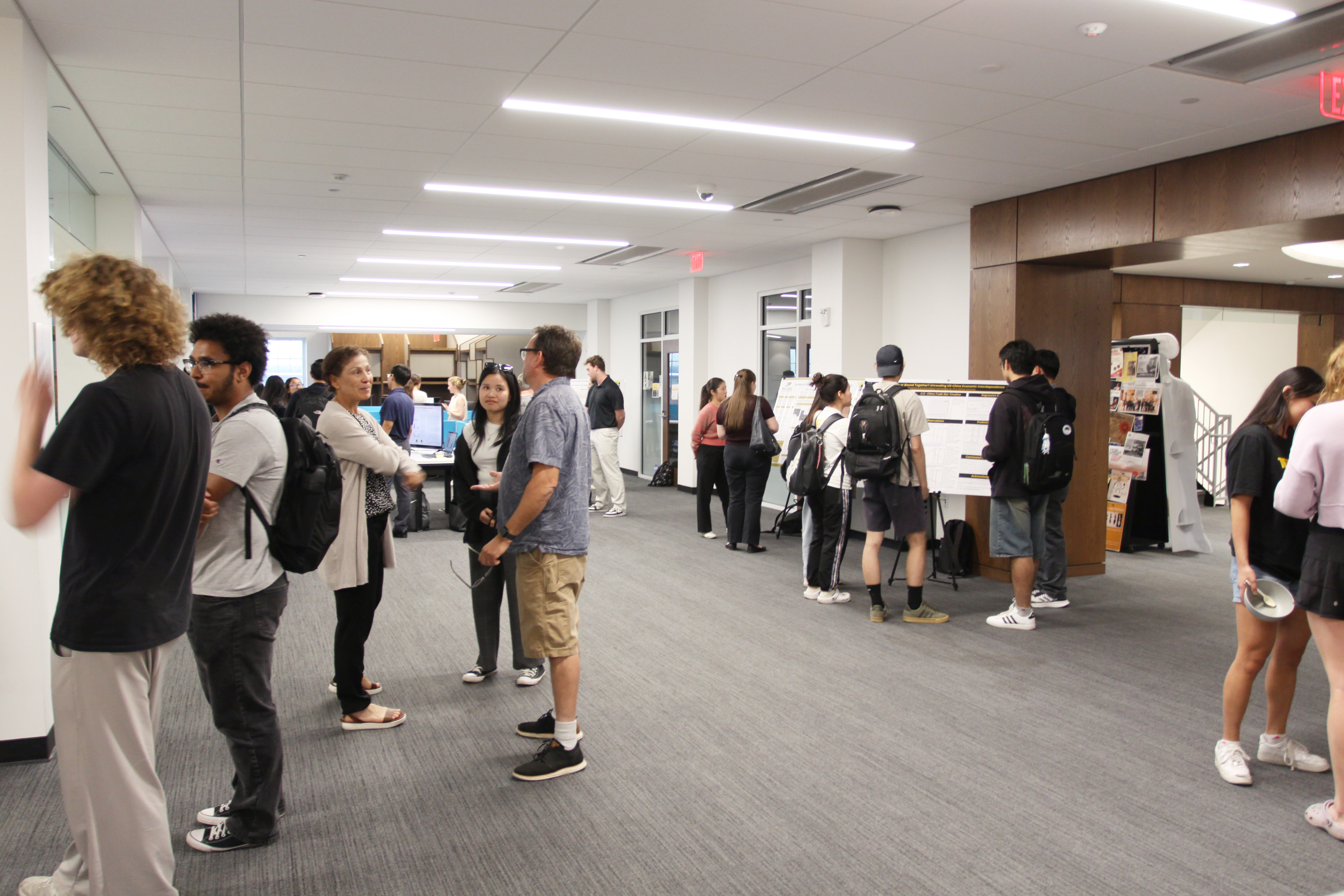Files
Download Full Text (1.4 MB)
Document Type
Poster
Publication Date
Fall 10-6-2023
Abstract
Reverse micelles are nanosized structures that encapsulate small water pools and allow us to investigate the fundamental interactions of small organic molecules in nanoconfinement. The behavior of small organic molecules, sometimes referred to as osmolytes, differs in bulk solution and confinement. Because reverse micelles are a good model for biological nanoconfinement, investigating osmolytes in reverse micelle systems can help us to better understand the role they play in biological systems. Optical spectroscopy such as UV-Vis, Fluorescence, and Red Edge Excitation (REES) was used to probe the environment of the reverse micelles. Three small organic molecules were studied: a monosaccharide, d-glucose, and two disaccharides, d-trehalose and sucrose. Spectroscopy results indicate that nanoconfinement affects the interactions had by the osmolytes. Dynamic Light Scattering was used to determine the size of the reverse micelles. Size data results suggest that size increases as w0 increases, and as the concentration of saccharide added decreases, the variability of size increases.
Department
Chemistry and Biochemistry, DePauw University and Chemistry, Colorado State University
Project Mentor
Bridget L. Gourley, PhD
Recommended Citation
Collier, Delaney and Gourley, Bridget L., "Investigating Sucrose and D-trehalose in AOT Reverse Micelles" (2023). Annual Student Research Poster Session. 131.
https://scholarship.depauw.edu/srfposters/131




Funding and Acknowledgements
Funding provided by the National Science Foundation.